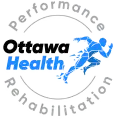Our Approach to Physiotherapy for Sciatica
Understanding Sciatica
Sciatica is a condition where the sciatic nerve, which runs from the lower back through the hips and buttocks and down each leg, becomes irritated. This can cause pain, numbness, or tingling along the nerve pathway. Symptoms can be intermittent or chronic and can range from mild to severe. Understanding the nature of sciatica is essential in developing an effective treatment strategy.
Importance of Physiotherapy in Managing Sciatica
Managing sciatica effectively often requires a multifaceted approach. Physiotherapy plays a critical role in this process by not only alleviating symptoms but also by addressing the underlying causes of the condition. Here’s why physiotherapy is essential for sciatica management:
- Pain Relief: Through targeted exercises and therapies, physiotherapy can help reduce the pain associated with sciatica.
- Improved Mobility: Physiotherapeutic interventions can help improve the range of motion and overall mobility.
- Strengthening Muscles: Strengthening the muscles around the sciatic nerve can provide better support and reduce the likelihood of future flare-ups.
- Posture Correction: Physiotherapy can help correct posture and body mechanics, which are often underlying contributors to sciatica.
By focusing on these key aspects, our approach to physiotherapy for sciatica aims to provide comprehensive and effective management of the condition. For more information on how we handle specific cases, visit our related articles on physiotherapy for back pain and physiotherapy exercises.
Our professional insights and evidence-based practices ensure that each patient’s needs are met with personalized care and precision. This holistic method not only addresses immediate symptoms but also aims at long-term wellness and prevention of recurrent episodes. Explore more about our specialized services such as physiotherapy for chronic pain and physiotherapy for shoulder pain.
Initial Assessment
Our initial assessment for physiotherapy for sciatica is a crucial step in understanding the condition and creating an effective treatment plan. It consists of a comprehensive evaluation and identifying underlying causes.
Comprehensive Evaluation
During the comprehensive evaluation, we gather detailed information about the patient’s medical history, symptoms, and lifestyle. This helps us form a complete picture of the individual’s health and the severity of their sciatica.
Key Components of Evaluation:
- Medical History: Previous injuries, surgeries, chronic conditions.
- Symptom Analysis: Pain intensity, frequency, duration, and triggers.
- Functional Assessment: Mobility, flexibility, strength, and posture.
- Diagnostic Tests: Reflex tests, range of motion tests, and physical palpation.
| Evaluation Aspect | Description |
|---|---|
| Medical History | Previous conditions and treatments |
| Symptom Analysis | Details about pain and discomfort |
| Functional Assessment | Mobility and physical capabilities |
| Diagnostic Tests | Specific tests to identify sciatica |
For more in-depth information on what this involves, you can visit our physiotherapy clinic page.
Identifying Underlying Causes
One of our primary goals is to identify the underlying causes of the sciatica. Sciatica can result from various factors, and determining the root cause is essential for effective treatment.
Common Underlying Causes:
- Herniated Disc: A common cause of sciatica where a disc in the spine is displaced.
- Spinal Stenosis: Narrowing of the spinal canal which can compress the sciatic nerve.
- Piriformis Syndrome: A condition where the piriformis muscle irritates the sciatic nerve.
- Degenerative Disc Disease: Breakdown of intervertebral discs affects the sciatic nerve.
Understanding these causes allows us to tailor our physiotherapy treatment to address the specific needs of the patient. We aim to not only relieve the symptoms but also to prevent future occurrences by addressing these root issues.
By conducting a comprehensive evaluation and identifying the underlying causes, we ensure that our treatment plan is personalized and effective, setting the foundation for successful management of sciatica.
Tailored Treatment Plan
When it comes to managing sciatica through physiotherapy, a personalized treatment plan is vital. Our approach focuses on an individualized exercise program, manual therapy techniques, and lifestyle recommendations to ensure comprehensive care.
Individualized Exercise Program
We design exercise programs tailored to the specific needs of each patient. These programs aim to strengthen muscles, improve flexibility, and alleviate sciatic pain. By focusing on targeted exercises, we address the underlying causes of sciatica and prevent future occurrences.
| Exercise Type | Duration (mins) | Frequency (per week) | Focus Area |
|---|---|---|---|
| Stretching | 10 – 15 | 3 – 5 | Lower Back, Hamstrings |
| Strengthening | 20 – 30 | 2 – 3 | Core, Glutes |
| Aerobic | 15 – 20 | 3 – 4 | Cardiovascular Health |
For more details on specific exercises, visit our article on physiotherapy exercises.
Manual Therapy Techniques
Manual therapy is a hands-on approach used to reduce pain and improve mobility. This includes techniques such as mobilization, manipulation, and soft tissue massage. By applying these methods, we aim to release tension, improve circulation, and promote healing.
- Mobilization: Gentle movements to increase joint flexibility.
- Manipulation: Quick, controlled motions to release restricted joints.
- Soft Tissue Massage: Targeted massage to relieve muscle tightness and improve blood flow.
Learn more about how manual therapy can help with other conditions such as physiotherapy for back pain and physiotherapy for neck pain.
Lifestyle Recommendations
We believe that lifestyle plays a crucial role in managing sciatica. Our lifestyle recommendations encompass ergonomic advice, activity modifications, and nutritional tips.
- Ergonomic Advice: Guidance on proper posture and workstation setup to reduce strain on the back.
- Activity Modifications: Adjustments to daily activities to avoid movements that may exacerbate sciatic pain.
- Nutritional Tips: Recommendations on a balanced diet to support overall health and recovery.
These recommendations aim to empower patients to take control of their condition and enhance their overall well-being. For more information, refer to our physiotherapy treatment section.
By implementing a comprehensive treatment plan that includes individualized exercises, manual therapy, and lifestyle adjustments, we strive to provide the best care for those suffering from sciatica. Our goal is to reduce pain, enhance mobility, and improve the quality of life for our patients. Explore more about our services at our physiotherapy clinic.
Progress Monitoring
Ensuring the successful treatment of sciatica through physiotherapy requires effective progress monitoring. This involves tracking improvement and adjusting the treatment plan as necessary.
Tracking Improvement
Regular assessments are crucial to understanding the efficacy of the physiotherapy regimen. We monitor several key metrics to gauge progress:
| Metric | Baseline | Week 2 | Week 4 | Week 6 | Week 8 |
|---|---|---|---|---|---|
| Pain Level (1-10) | 8 | 6 | 4 | 3 | 2 |
| Flexibility (Degrees) | 30° | 35° | 40° | 45° | 50° |
| Mobility (Steps/min) | 50 | 55 | 60 | 65 | 70 |
By tracking these metrics, we observe trends and improvements, ensuring our interventions are effective. Pain levels, flexibility, and mobility are frequently measured during sessions to provide a comprehensive view of patient progress.
Adjusting the Treatment Plan
Our approach to physiotherapy for sciatica is dynamic. Based on the data collected, we make necessary adjustments to the treatment plan to achieve the best outcomes. Here’s how we do it:
- Evaluate Pain Levels: If pain persists or intensifies, we modify exercises and manual techniques.
- Assess Flexibility and Mobility: Improvements or stagnation in flexibility and mobility prompt adjustments in the intensity and type of exercises.
- Patient Feedback: Regular check-ins with patients provide valuable insights into their well-being and highlight areas requiring attention.
Adjustments are tailored to suit the individual needs of each patient, ensuring personalized care. This continuous feedback loop allows us to optimize the therapy process, promoting faster recovery and sustained health.
For more information on our individualized approach and specific exercises, explore our articles on physiotherapy exercises and physiotherapy treatment.
Addressing Long-Term Wellness
Preventative Measures
In our commitment to your long-term wellbeing, we emphasize preventative measures as an integral part of managing sciatica. Prevention not only helps in avoiding the recurrence of sciatica but also enhances overall quality of life. Our strategies include:
- Educational Workshops: We conduct workshops focusing on body mechanics, ergonomics, and proper lifting techniques.
- Home Exercise Programs: We develop tailored home exercise regimens that strengthen core muscles and improve posture.
- Regular Assessments: Periodic check-ups to monitor spinal health and detect early signs of sciatic irritation.
For detailed guides on some of these aspects, explore our articles on physiotherapy exercises and physiotherapy for back pain.
Continued Support and Maintenance
We believe that continuous support is vital for sustaining the benefits achieved through physiotherapy. Our continued maintenance approach includes:
- Follow-up Sessions: Regularly scheduled sessions to track progress and make necessary adjustments to the treatment plan.
- Access to Resources: Providing access to online resources, such as instructional videos and articles, to reinforce learning.
- 24/7 Helpline: A dedicated helpline for addressing any concerns or queries you might have about your ongoing treatment.
We encourage our patients to remain proactive in their approach towards maintaining their spinal health. To further explore treatment options for other conditions, read our pieces on physiotherapy for neck pain, physiotherapy for knee pain, and physiotherapy for hip pain.
By embracing these long-term wellness strategies, we ensure that you not only manage your sciatica effectively but also lead a healthier, more active life.
Our Commitment to Your Wellness
Professional Guidance
We understand that managing sciatica can be a challenging journey. Our team of highly trained physiotherapists is dedicated to providing professional guidance every step of the way. We utilize evidence-based practices to craft personalized treatment plans tailored to your specific needs and goals. By staying current with the latest advancements in physiotherapy, we ensure that you receive the most effective care possible.
We believe in a collaborative approach—working closely with you to understand your symptoms, concerns, and lifestyle. This enables us to offer targeted interventions that address not just the symptoms but also the root causes of your sciatica. For more information about how physiotherapy can help with various conditions, you can visit our resources on physiotherapy treatment.
Empowering You on Your Wellness Journey
Our ultimate goal is to empower you to take control of your health and well-being. We emphasize patient education, providing you with the knowledge and tools necessary to manage your condition effectively. This includes teaching you specific physiotherapy exercises designed to relieve sciatic pain, improve flexibility, and strengthen the muscles supporting your spine.
Beyond your treatment sessions, we continue to offer support and guidance to ensure your long-term wellness. We provide actionable lifestyle recommendations that can help prevent the recurrence of sciatica. Whether it’s advice on ergonomic adjustments, posture corrections, or nutritional guidance, we’re here to help you make informed choices that foster overall health.
Here is an example of our patient progress monitoring:
| Milestone | Initial Assessment | 1 Month | 3 Months | 6 Months |
|---|---|---|---|---|
| Pain Levels | 8/10 | 6/10 | 4/10 | 2/10 |
| Range of Motion | Limited | Improved | Moderate | Full |
Your wellness journey doesn’t end when the pain subsides. We offer continued support to maintain your progress and address any new concerns that may arise. For more insights, explore our articles on related treatments such as physiotherapy for back pain and physiotherapy for chronic pain.
Our commitment to your wellness is unwavering. Trust us to guide you through every step of your physiotherapy for sciatica journey, ensuring that you achieve lasting relief and a higher quality of life. For personalized care, visit our physiotherapy clinic or find physiotherapy near me.




